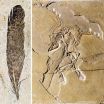(Press-News.org) COLUMBUS, Ohio – A new study reveals the secret of how some fashion and beauty magazines continue to attract devoted audiences, even though they glamorize super-thin models that would seem to taunt normal-sized women.
The research suggests that some readers, rather than comparing themselves unhappily with the thin models, may derive "thinspiration": the belief that they can make themselves look just as attractive as the models they see in these magazines.
But this is not any kind of positive inspiration, said Silvia Knobloch-Westerwick, author of the study and professor of communication at The Ohio State University.
"Women get the message that they can look just like the models they see in the magazines, which is not helpful," she said. "It makes them feel better at first, but in the long run women are buying into these thinness fantasies that just won't come true."
How much of a fantasy is it? The study found that women who felt greater "thinspiration" by viewing images of thin models were actually less likely to engage in weight-loss behaviors.
"They felt better about their body instantly when viewing the images and related content. They weren't thinking about what they had to do to look like these models."
The study, which appears online in the journal Health Communication, involved 51 female college students who participated online in what they were told was research in which they would evaluate magazine articles and advertisements.
Unlike many studies of this kind, the participants didn't view just thin-ideal images, without any accompanying text, during a single experimental session. Instead, they viewed these ads and articles over the course of five days, in order to give a more realistic portrayal of how people consume media.
At the beginning of the study, Knobloch-Westerwick collected data on the participants' magazine reading habits, their body mass index, body satisfaction levels and their tendency to compare their physical appearance to that of others.
On each of the five days, the women viewed 16 pages containing advertisements or articles taken from top women's beauty and fashion magazines. The pages were not chosen for content, but because each contained a photo of a thin female model as the dominant graphic element on each page.
Participants were asked various questions about what they thought of the pages, as well as questions about their body satisfaction.
Crucial to the study were questions aimed at discovering how the women were comparing themselves to the models on the magazine pages.
Were the participants simply evaluating how they looked compared to the models? Those who were making such comparisons would say they strongly agreed with statements like "This woman is thinner than me."
Or were the participants viewing the models in a self-improvement type of comparison? These women would strongly agree with statements like "I would like my body to look like this woman's body."
After the five days, participants completed more questionnaires, including one that asked them about their dieting behavior during the course of the study.
Results showed that women who simply evaluated themselves compared to the models showed lower body satisfaction by the end of the study. They were also more likely to say they dieted during the last five days.
"Social comparison for self-evaluation makes these women less happy with how they look and more likely to want to diet," Knobloch-Westerwick said. "They look at the models in the magazines and think, 'this person is so much thinner than I am; I should skip a meal.'"
But women who used the self-improvement social comparison ("I would like my body to look like this woman's body") actually saw increases in body satisfaction.
"These women felt better about their own bodies because they imagined that they could look just like the models they saw in the magazines," she said.
Although this wasn't examined directly in the study, Knobloch-Westerwick said she suspects that the text accompanying these images – lines such as "Lose 10 pounds in 5 days" – would feed into those fantasies.
Another key finding was that women in the study tended to shift toward the self-improvement comparisons over the course of the study. That suggests that women may begin to identify more with these thin models after repeated exposures.
"They may begin to feel affiliated with the models, and start to think this person is someone like me, someone I can be friends with and emulate," she said.
Knobloch-Westerwick said this may also explain why the study found that viewing images of thin models may lead to higher body satisfaction, when so many other studies have found the opposite.
"If they just see an image of a thin model once and have to react immediately, they may indeed have poorer body satisfaction," she said.
"But if they look at images over the course of several days, readers may begin to feel more affiliated with the models, feel more like they could be like them. That could lead them to switch from comparing themselves negatively to the models to using these models as thinspiration."
In addition, she noted that many studies that found viewing images of thin models leads to poorer body satisfaction utilized just images without any accompanying text. But because this study included actual magazine pages, participants read positive messages about how they could look like the models pictured.
Knobloch-Westerwick said women, at a surface level, may read these magazines simply as entertainment. But they should realize how the magazines are affecting them.
"Women might be able to fight off the harmful media impacts on their body satisfaction if they understand how these messages are designed to make them fall for unrealistic and even unhealthy body ideals."
INFORMATION:
Written by Jeff Grabmeier
Around 5,000 cases of DCIS, a condition where cancerous cells are contained within the milk ducts of the breast, are diagnosed each year in the UK, with two thirds diagnosed through breast screening. If left untreated, up to half of DCIS cases could progress into invasive breast cancer, but it is not possible to say which ones, so all women are offered treatment.
This usually involves breast-conserving surgery (lumpectomy) and, to reduce the risk of the cancer returning, radiotherapy to kill any remaining cancer cells.
However, even with treatment up to one in five ...
RICHLAND, Wash. – In the Pacific Northwest, young salmon must dodge predatory birds, sea lions and more in their perilous trek toward the ocean. Hydroelectric dams don't make the trip any easier, with their manmade currents sweeping fish past swirling turbines and other obstacles. Despite these challenges, most juvenile salmon survive this journey every year.
Now, a synthetic fish is helping existing hydroelectric dams and new, smaller hydro facilities become more fish-friendly. The latest version of the Sensor Fish – a small tubular device filled with sensors ...
Since 1999, the conjecture by Asher Peres, who invented quantum teleportation, has piqued the interest of many scientists in the field. According to his hypothesis, the weakest form of quantum entanglement can never result in the strongest manifestation of the phenomenon. Today, a team of researchers from the University of Geneva (UNIGE), Switzerland, and the Hungarian Academy of Sciences have proven this conjecture to be false, thus solving one of the most famous problems in quantum information physics. This news was published in Nature Communications review.
The physicist ...
Providence, RI— Results of a new study published in The American Journal of Managed Care show that the presence of a family caregiver during patient recruitment is associated with a greater rate of completion of a post hospital transitional care coaching intervention, particularly among men.
Discharge is a crucial component of the hospitalization process. Patients' understanding and engagement in discharge plans greatly influence their experiences, health outcomes, such as hospital readmission, and overall costs.
The study looked at discharges using the Care Transitions ...
There's more to the decline of the once mighty ancient Assyrian Empire than just civil wars and political unrest. Archaeological, historical, and paleoclimatic evidence suggests that climatic factors and population growth might also have come into play. This is the opinion of Adam Schneider of the University of California-San Diego in the US, and Selim Adali of the Research Center for Anatolian Civilizations in Turkey, published in Springer's journal Climatic Change.
In the 9th century BC, the Assyrian Empire of northern Iraq relentlessly started to expand into most of ...
Washington, DC (November 5, 2014) – Since the 1920s, scholars and politicians have blamed violence in movies and other media as a contributing factor to rising violence in society. Recently the responses to mass shootings in Aurora, CO and at Sandy Hook Elementary followed this theme as media consumption came into the equation. But can consumption of violent media really be a factor in real-world violence? A recent study published in the Journal of Communication by a researcher at Stetson University found that there were no associations between media violence consumption ...
For years, a multidisciplinary team of Johns Hopkins researchers has tracked an elusive creature, a complex of proteins thought to be at fault in some cases of sudden cardiac death. As they report Nov. 5 in the online edition of Nature Communications, they have finally captured images of the complex. Those images reveal the connection between some genetic mutations and electrical abnormalities of the heart and provide a starting point for designing therapies.
Sudden cardiac death is often caused by conditions that affect electrical signaling in the heart. Genetic studies ...
Berlin, Germany (November, 2014) – Reconstructing ancient life has long required a certain degree of imagination. This is especially true when considering the coloration of long-extinct organisms. However, new methods of investigation are being incorporated into paleontology that may shed light (and color) on fossils. Research presented at the recent Society of Vertebrate Paleontology meeting shows the importance of using new imaging technologies in reconstructing the color of Archaeopteryx, one of the most famous and important fossils species.
Ryan Carney of Brown ...
Berlin, Germany (November, 2014) – Unexpectedly one of the largest diamond mines in Africa, Catoca in Angola, holds 118 million year old dinosaur, crocodile and large mammal tracks. The mammal tracks show a raccoon-sized animal, during a time when most were no larger than a rat.
Nearly 70 distinct tracks were recovered in the Catoca mine in Angola. All the tracks were found in a small sedimentary basin, formed about 118 Ma, during the Early Cretaceous, in the crater of a kimberlite pipe.
The most important of these finds are those whose morphology is attributable ...
SALT LAKE CITY, Nov. 5, 2014 – University of Utah engineers developed the first room-temperature fuel cell that uses enzymes to help jet fuel produce electricity without needing to ignite the fuel. These new fuel cells can be used to power portable electronics, off-grid power and sensors.
A study of the new cells appears online today in the American Chemical Society journal ACS Catalysis.
Fuel cells convert energy into electricity through a chemical reaction between a fuel and an oxygen-rich source such as air. If a continuous flow of fuel is provided, a fuel ...



